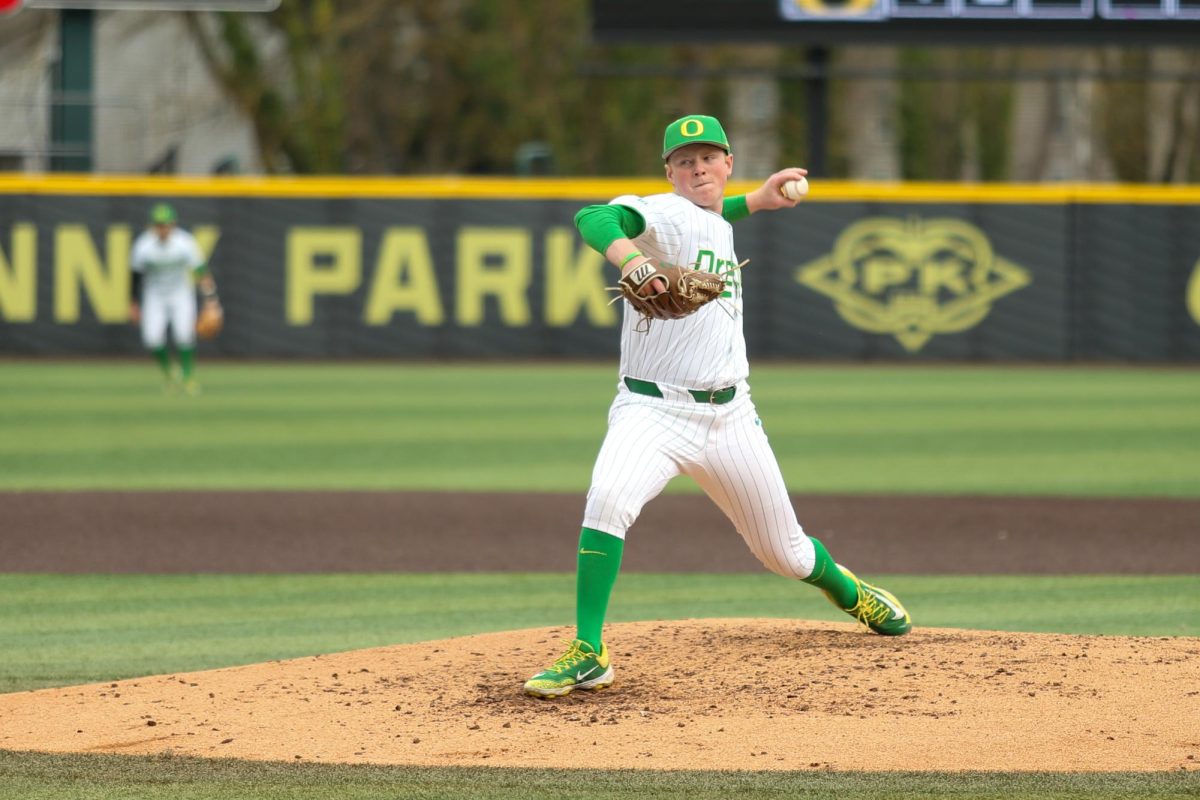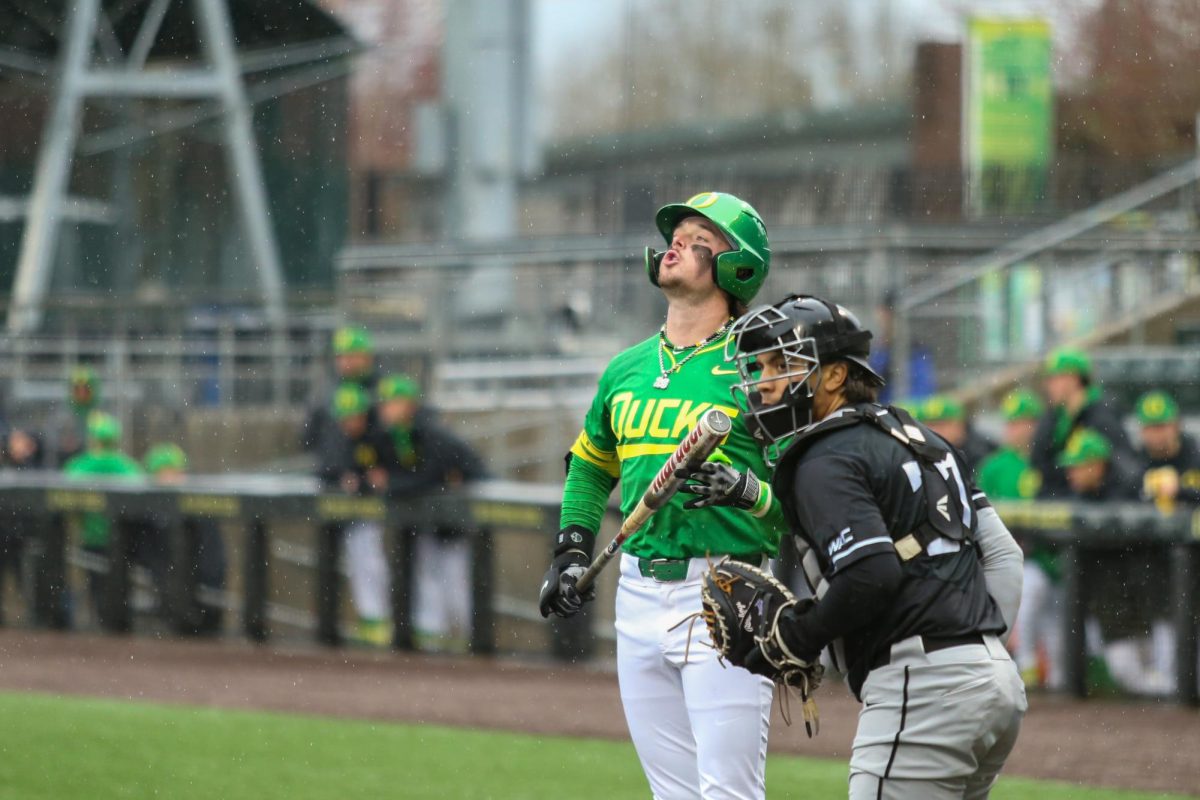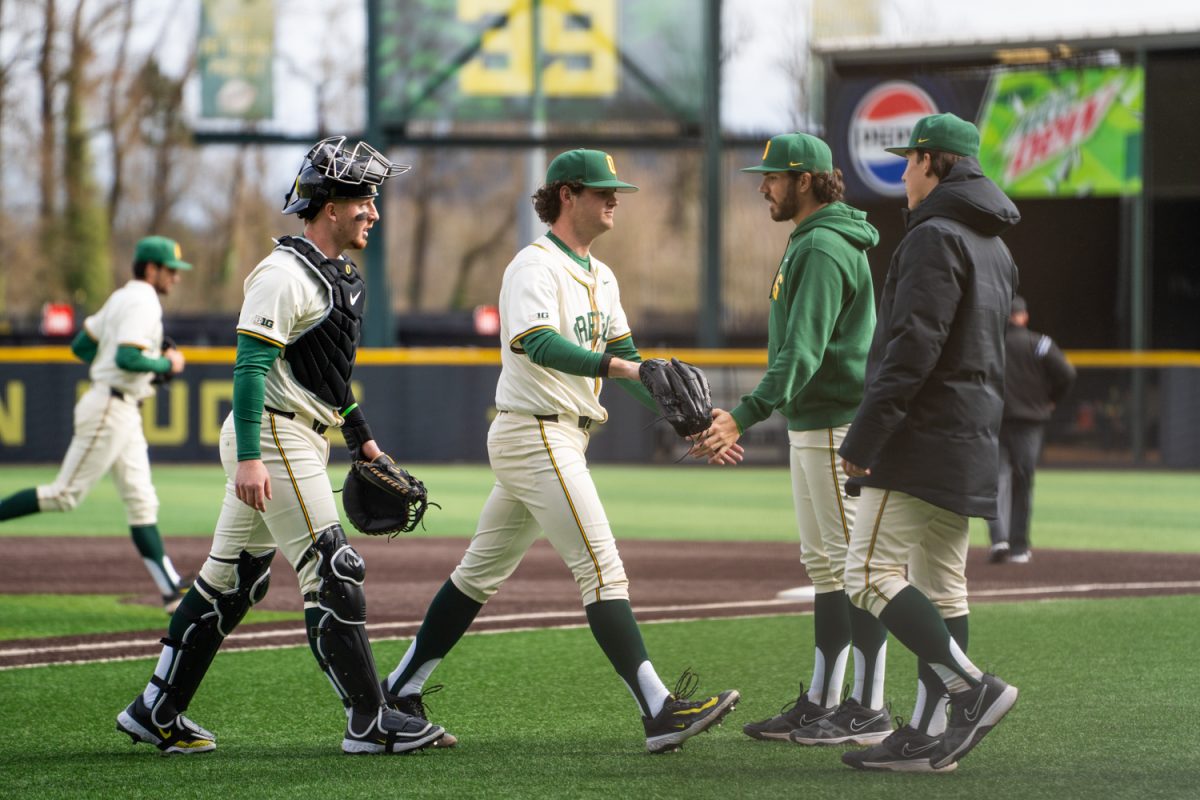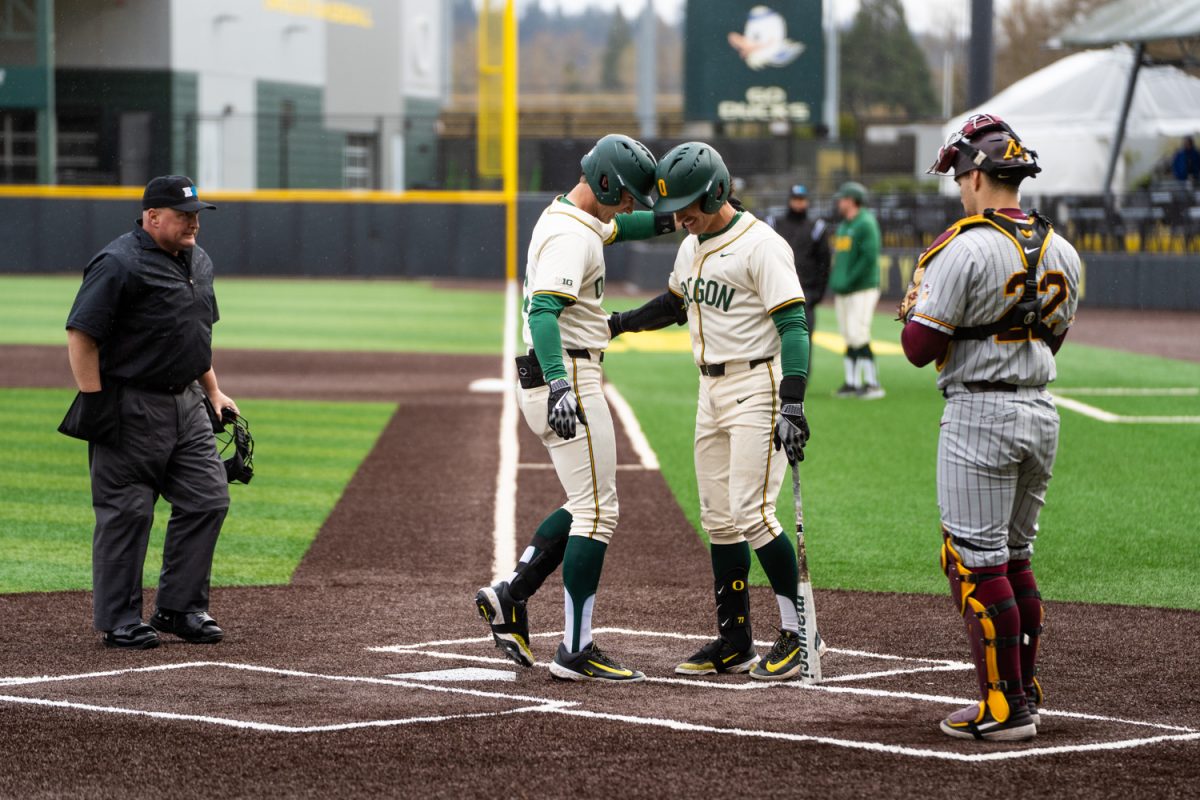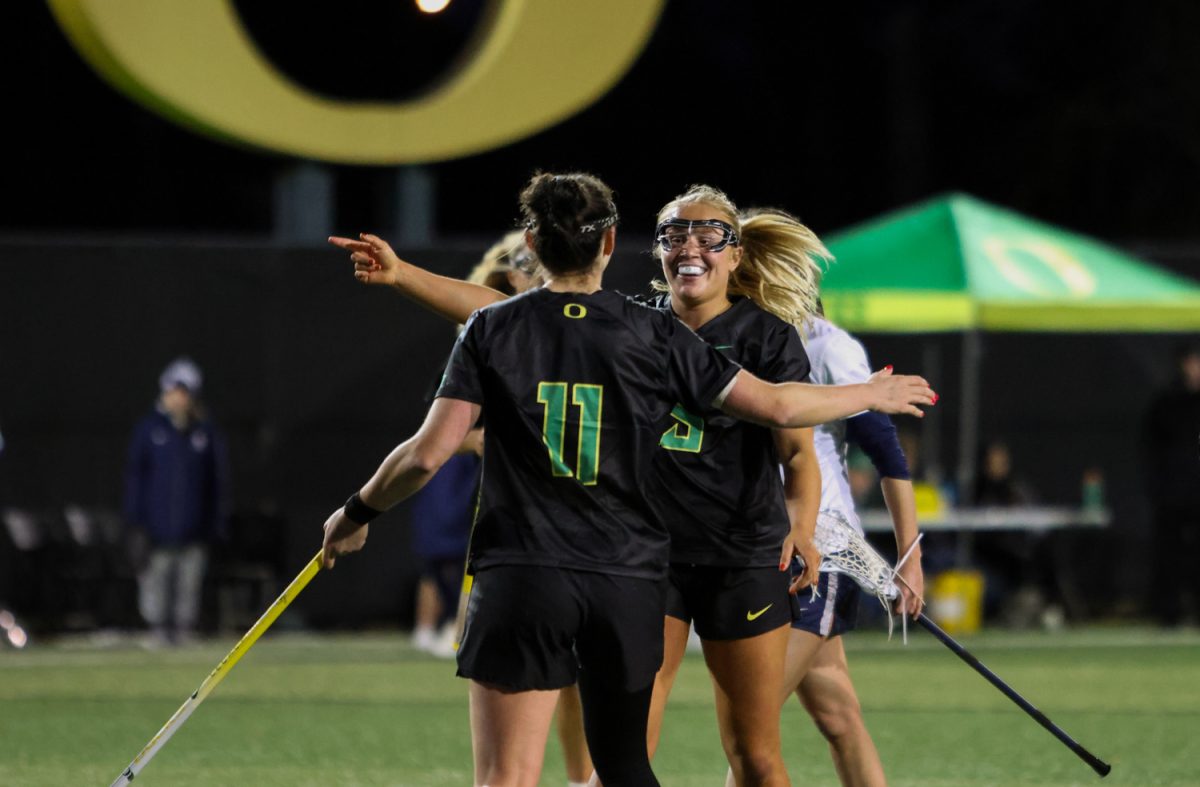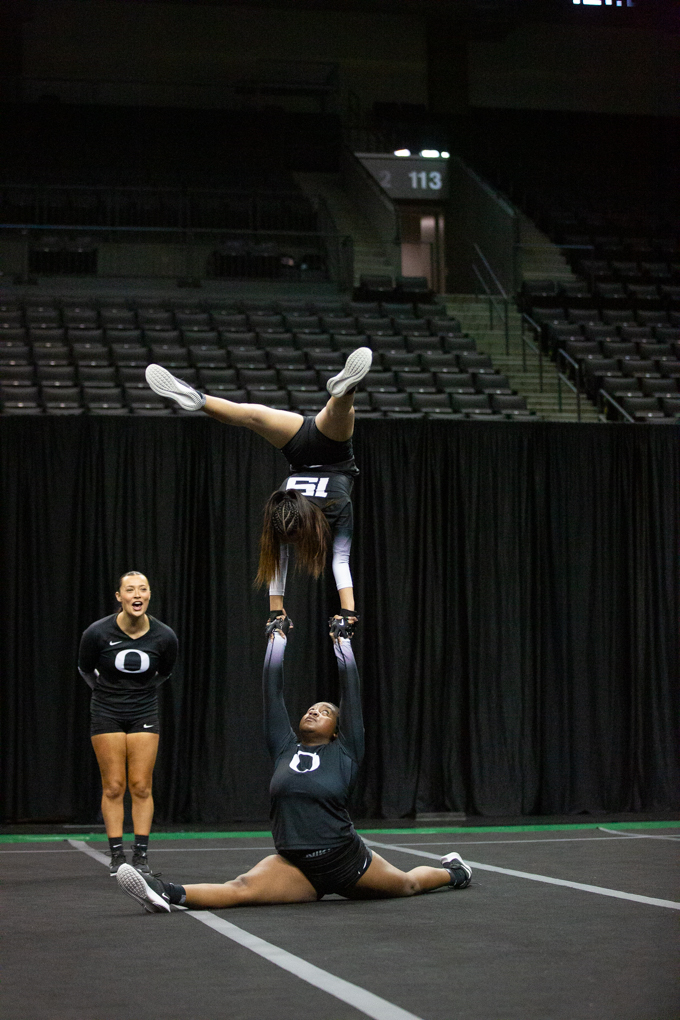Last Saturday’s wet affair at PK Park began with a first-inning at-bat between starting pitcher Grayson Grinsell and Ryan Jackson.
It wasn’t really between those two at all, though.
Grinsell tried three times in that at bat to pick off runner Austin Overn at first base — and it would take seven attempts before he’d finally get him later in the inning. That would give way to the rest of both teams’ staffs trying endlessly to get runners out, and with minimal action in the rest of the game, it became a slog.
Each at-bat, it seemed, featured two or three pickoff attempts that became eventually halfhearted — more out of obligation than real opportunity. The quacking sound effect that came with every failed Trojans attempt felt like a teasing laugh: saying, “There’s nothing you can do to stop me.”
It happened again on Sunday. Trojan pitcher Xavier Martinez tried five times to get Bryce Boettcher at first base in a single inning…and didn’t succeed. The groan of fans at the ballpark echoed around the stands. The umpires could do nothing but shrug. It’s not illegal — in college.
The recent movement to make baseball more exciting — at its core, faster — has divided fans. The integration of new technology, like the pitch clock, or new rules, that limit the number of times a pitcher can attempt a pickoff per at-bat in Major League Baseball, has disgruntled traditionalists but appeased casual fans.
The question lies in whether the NCAA should adopt a similar set of rules. The pitch clock has already been added. Surely, it seems, the addition of a rule that mirrors the “disengagement” rule in MLB would benefit these teams (and fans).
It would better prepare these players for the majors — where some of them are intending to go. Given unlimited attempts to attempt pickoffs with no penalty but for the potential stolen base, why wouldn’t a pitcher try? The reward far outweighs the risk. If not for a few boos, it’s worth a shot.
Major League Baseball’s rule counts the number of disengagements — that is, the number of times that a pitcher steps off the rubber for any reason, be it a pickoff attempt or to call time — and limits them to twice per at bat. If the pitcher steps off a third time, it must result in either an out or a stolen base. If neither occurs, the pitcher is charged with a balk.
If the NCAA added a similar rule limiting the number of stepoffs per plate appearance, there’s potential that these moments become more selective. Pitchers are forced to pick and choose their time to try for that out — in the process increasing their situational awareness and better preparing them for professional baseball.
There’s been debate on the MLB’s new rule changes, but the results are obvious: games are going by faster. The quicker games are adored by many, but hindered by pickoff attempts.
MLB’s intention with this rule was to increase action on the basepaths, and while offense in college baseball tends to score more runs and steal more bases than professional teams, there’s benefits for other reasons.
With that rule (or something that mimics it), college games would speed up. These strings of pickoff attempts without respite stretch out games — not only can a team make use of the non-rule to negate any head of steam an opponent can build up, it can essentially filibuster its way through an inning for any reason, without punishment.
It doesn’t have to be as strict as the pros. The limit can be higher — it makes sense; the level is lower. Even with a bar of three attempts per plate appearance, teams are forced to consider when they should attempt that, not whether. Fans can see more action, and players can become better prepared for a potential career where that rule already exists.




